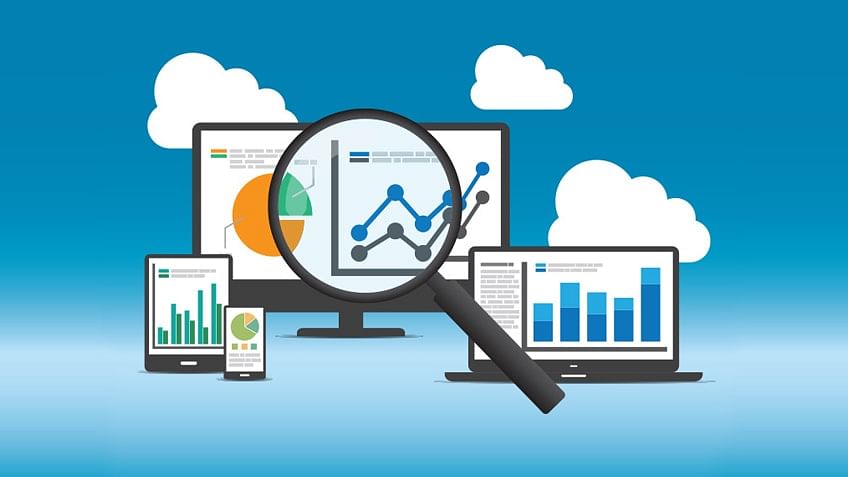Web analytics is a vital tool for understanding user behavior, optimizing website performance, and driving business growth. It allows businesses to collect, measure, and analyze data to make informed decisions and enhance the overall user experience. In today’s digital age, where data is king, web analytics provides the insights needed to tailor marketing strategies, improve content, and boost conversions.

What Is Web Analytics?
Web analytics refers to the collection, reporting, and analysis of website data. It goes beyond simply tracking page views and visitor counts; it dives deep into how users interact with a site, which pages they visit, how long they stay, and what actions they take. The goal is to understand what’s working, identify areas for improvement, and ultimately, optimize the website to meet business goals.
Web analytics tools, such as Google Analytics, Adobe Analytics, and others, allow businesses to gather valuable data about their audience and website performance. This data can then be used to fine-tune marketing strategies, improve website functionality, and ensure that the business is meeting its objectives.
Key Metrics in Web Analytics
Several key metrics provide insight into how a website is performing. Here are a few of the most important:
- Traffic Sources:
- Web analytics helps identify where website visitors are coming from, whether it’s through organic search, paid ads, social media, or direct visits. Understanding traffic sources helps businesses focus their marketing efforts on the most effective channels.
- Bounce Rate:
- The bounce rate measures the percentage of visitors who leave the website after viewing just one page. A high bounce rate may indicate that the content is not engaging, or the user experience is lacking, prompting visitors to exit quickly.
- Conversion Rate:
- The conversion rate is the percentage of visitors who complete a desired action on the website, such as filling out a form, making a purchase, or signing up for a newsletter. Tracking conversions is crucial for determining whether the website is fulfilling its goals.
- Page Views and Time on Site:
- These metrics show how many pages users visit and how long they spend on the site. Longer visit durations and higher page views can indicate that users are finding the content valuable and engaging.
- Exit Pages:
- This metric shows the pages where visitors typically leave the website. Identifying exit pages helps businesses understand where they may be losing potential customers and take action to improve those pages.
- User Demographics and Behavior:
- Web analytics tools provide detailed insights into user demographics, including age, gender, location, and interests. This data helps businesses better understand their audience and tailor content and marketing strategies accordingly.
The Benefits of Web Analytics
- Improved User Experience:
- By analyzing user behavior, businesses can identify any obstacles or issues that users may encounter while navigating the site. This can lead to more intuitive design, better navigation, and faster load times, all of which contribute to a better user experience.
- Data-Driven Decision Making:
- Web analytics takes the guesswork out of business decisions. With clear data at hand, businesses can make informed decisions about everything from content strategy to marketing campaigns, ensuring they are investing time and resources in what truly works.
- Optimizing Marketing Campaigns:
- By tracking how users interact with marketing campaigns, businesses can adjust strategies in real time. Whether it’s A/B testing different ad creatives or fine-tuning the targeting of a paid ad campaign, web analytics provides the insights necessary to optimize for better performance.
- Increased Conversion Rates:
- Web analytics helps businesses understand what drives conversions and where potential customers are dropping off. By identifying conversion bottlenecks, businesses can make targeted improvements that boost conversion rates.
- Enhanced SEO:
- SEO (Search Engine Optimization) is crucial for driving organic traffic to a website. Web analytics provides insights into which keywords and search terms are bringing users to the site, as well as how well the website is ranking in search engines. This data can be used to improve SEO efforts and increase visibility in search results.
- Goal Tracking and Reporting:
- With web analytics, businesses can set specific goals, such as increasing newsletter signups or boosting e-commerce sales. Analytics tools allow for the tracking of these goals, providing valuable reports on progress and areas for improvement.
How to Use Web Analytics Effectively
- Set Clear Objectives:
- Before diving into web analytics, it’s essential to define clear objectives. What are you hoping to achieve with your website? Whether it’s increasing traffic, boosting sales, or improving user engagement, having clear goals helps focus analytics efforts.
- Regularly Review and Update Data:
- Web analytics is not a one-time task. It’s important to regularly review the data to identify trends, spot issues, and track progress toward goals. Regularly updating and analyzing data ensures that you stay on top of changes in user behavior and market conditions.
- Use Data to Guide Content Strategy:
- The data gathered from web analytics can provide valuable insights into what type of content resonates with your audience. Use this information to create more of the content that engages your users, drives traffic, and leads to conversions.
- Leverage Advanced Features:
- Most web analytics tools offer advanced features such as segmentation, cohort analysis, and custom reporting. These features allow businesses to dive deeper into user behavior and create more targeted strategies.
- A/B Testing:
- A/B testing allows businesses to compare two different versions of a webpage or campaign to see which one performs better. Use web analytics to track the results of A/B tests and make data-driven decisions on which version to implement.



